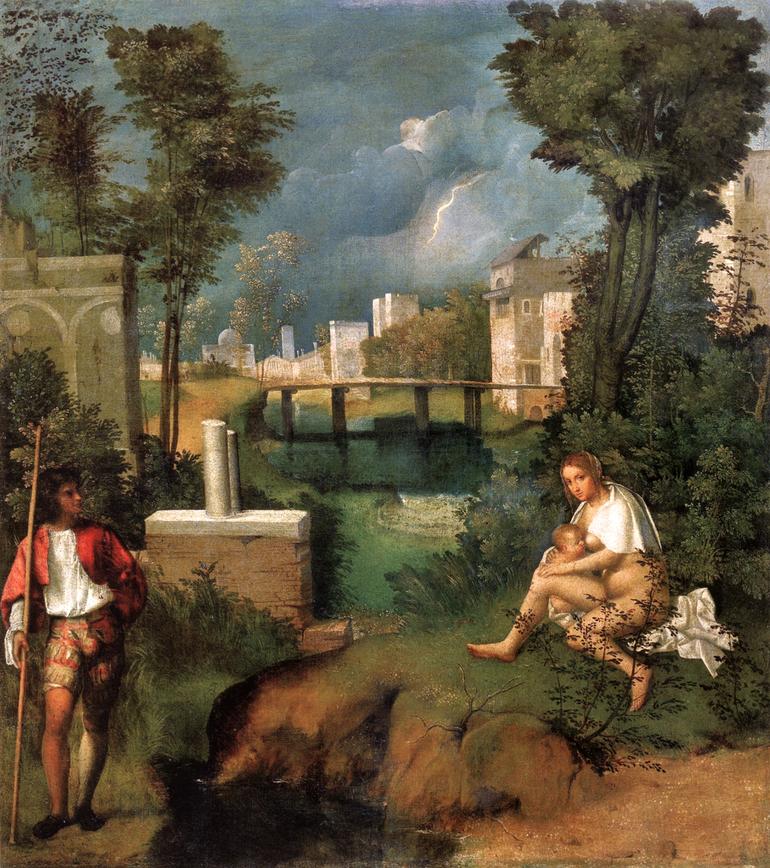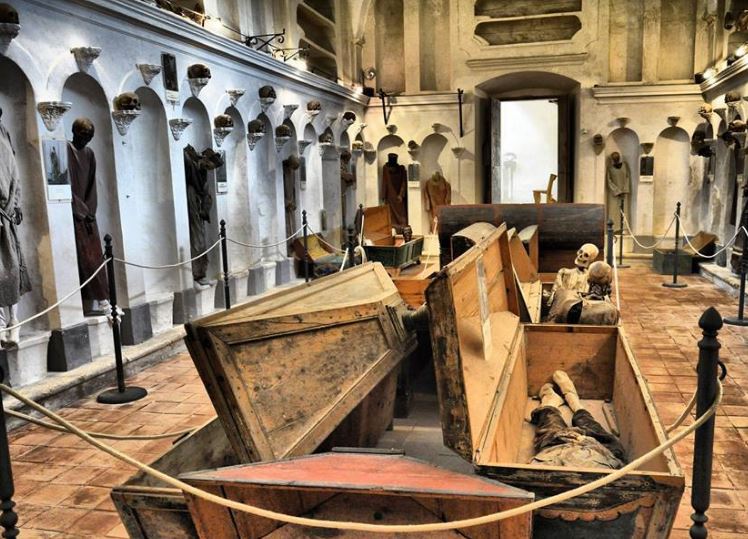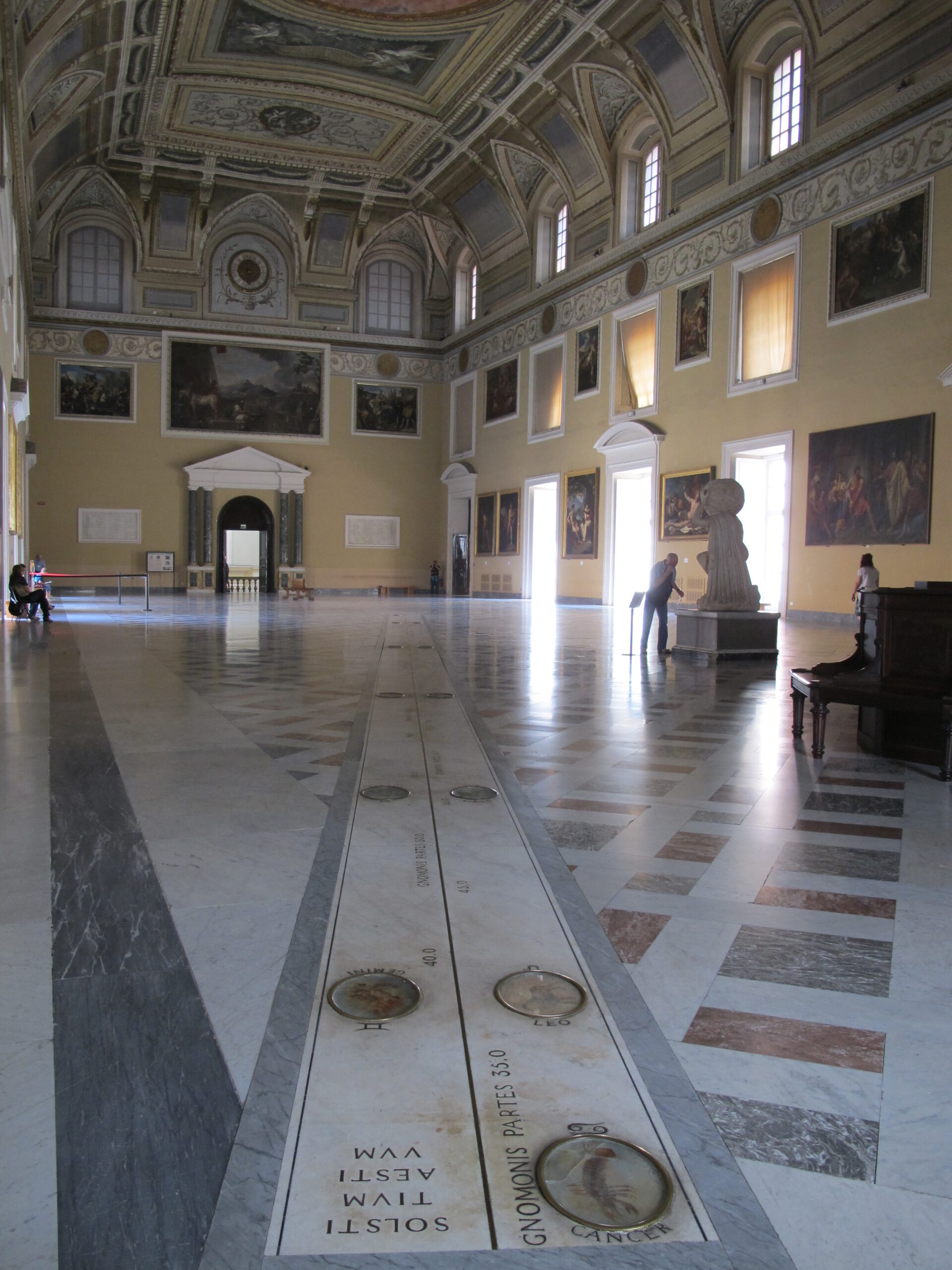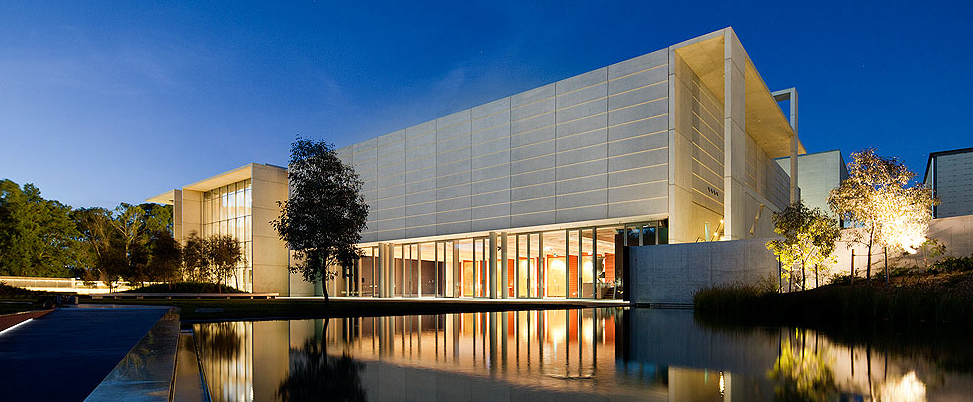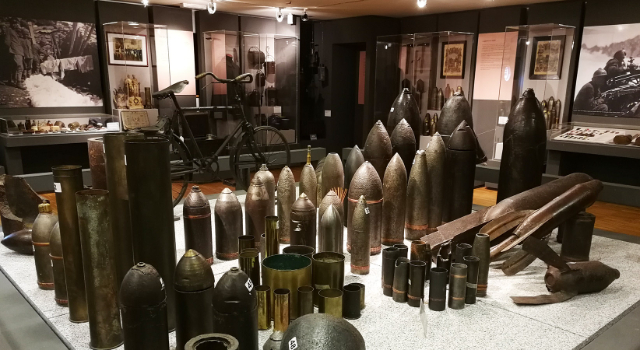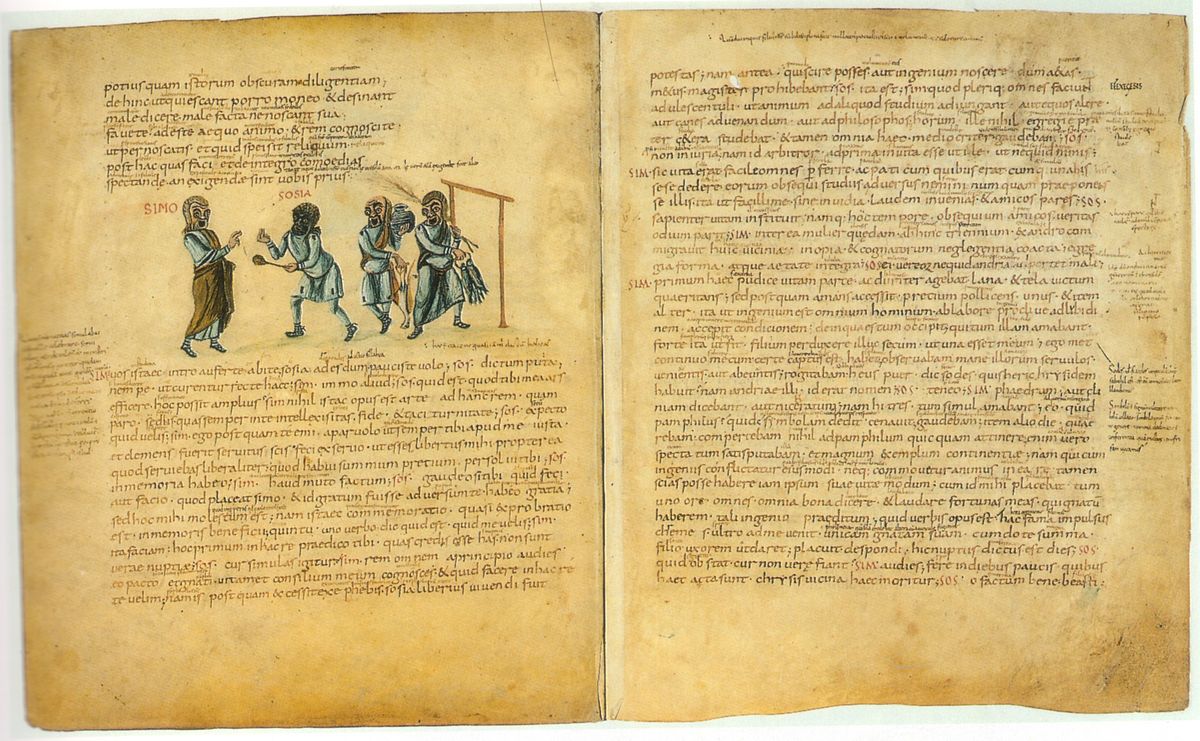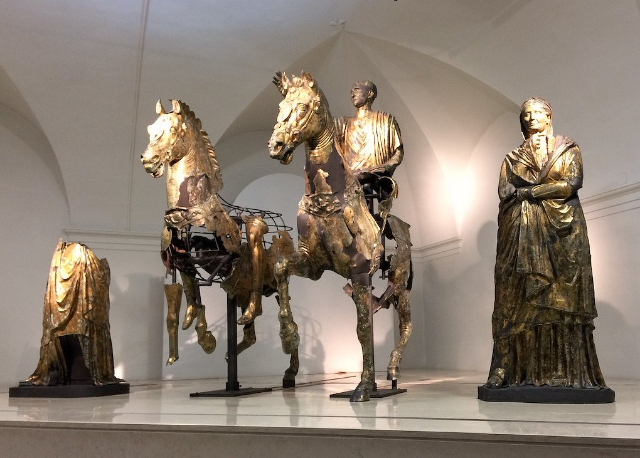The Venetian patrician Marcantonio Michiel mentions in his "Notizie d’opere del disegno" a painting seen in the Palazzo Vendramin in Venice in 1530: "el paesetto in tela cun la tempesta, cum la cingana [gypsy] et soldato … de man de Zorzi de Castefranco."
All critics identify the painting described with this one by Giorgione. At least until the 18th century it was part of the Vendramin collection.
In 1875 it became the property of the Giovannelli princes, who sold it to the Italian state in 1932. It is currently in the Gallerie dell’Accademia in Venice.
Generations of scholars have spilled rivers of ink in an attempt to understand what the painting "really" represents.
What relationship binds the people painted in that beautiful landscape? Is the walled city real or imaginary? And why is a storm about to break out? Is it a story (mythological, biblical…), an allegory or, even, a pure fantasy of the artist?
This is not the first time that a painting has been the subject of different interpretations (we need only recall Botticelli’s La Primavera, but also Piero della Francesca’s The Flagellation of Urbino and Titian’s L’Amor Sacro e l’Amor profano), but on The Tempest the positions of critics are even irreconcilable. And each scholar in proposing "his" interpretation demolishes those that preceded him–being in turn demolished by the next critic.
What follows is a brief, not complete, list of the various hypotheses.
Until the mid-19th century, the scene was interpreted, perhaps somewhat naively, as a portrait of the artist with his family, and the painting was titled The Family of Giorgione.
Then, it was thought to be a depiction derived from ancient mythology: either from Statius’ Thebaid (Adrastus discovers in a forest Hypsipyle who is suckling Ofelte, son of Lycurgus) or from Ovid’s Metamorphoses (Deucalion and Pyrrha, the progenitors of mankind who survived the universal flood).
Some saw it as a collage of abstract "personifications": the Fortress (the soldier) and Charity (the woman) in perpetual struggle against the unpredictability of Fortune (the lightning bolt that rips through the clouds).
Some others have seen in it a complicated esoteric interpretation of the biblical account of the "Finding of Moses" on the banks of the Nile. And equally complicated is the interpretation of those who relate the scene to an allegorical Renaissance novel by Francesco Colonna (Hypnerotomachia Poliphili), laden with references to Egyptizing Hermeticism: the woman is Isis and Venus together, "mother of all things," the origin and end of everything.
There are those who bet that it is Adam and Eve after the expulsion from Eden: Adam rests from his labors, Eve nurses the baby Cain, delivered in pain, the city in the background is the lost Eden, the lightning symbolizes divine wrath. And those who claim that the Tempest is the "blanket" of the portrait of the Venetian captain Erasmo da Narni known as Gattamelata and represents him near Treviso, the city whose walls he was to rebuild.
And we cannot be silent that in 1998 a book by J. Manuel de Prada, entitled precisely The Tempest, proposed a new, albeit fictionalized, reading of the painting.
